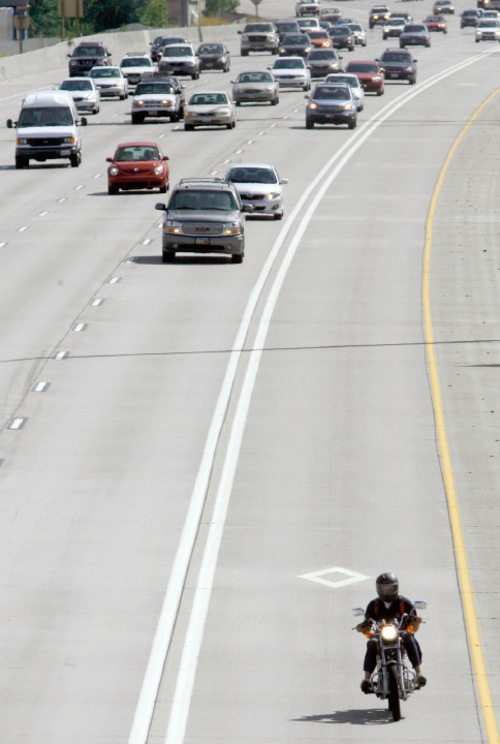This is an archived article that was published on sltrib.com in 2010, and information in the article may be outdated. It is provided only for personal research purposes and may not be reprinted.
High Occupancy Vehicle (HOV), or car pool, lanes on Interstate 15 are much safer, faster and actually carry far more people than other freeway lanes.
But 15 to 20 percent of the cars in those lanes are there illegally, according to a Utah Department of Transportation report Wednesday to the Legislature.
"The primary purpose in developing these express lanes is to move more people," UDOT Executive Director John Njord told the Transportation Interim Committee. "And we are moving more people there than we are in the general-purpose lanes."
He said northbound car pool lanes along the Wasatch Front, for example, carry an average of 3,304 people per hour. That is nearly double the 1,861 people per lane in the parallel general-purpose lanes.
The HOV lanes carry an average of two people per vehicle, compared to 1.1 in general-purpose lanes.
HOV lanes on Interstate 15 are open to vehicles with at least two passengers, or to single-rider cars equipped with an electronic transponder to pay tolls. Also, cars with "clean fuel" license plates and motorcycles are allowed to use the lanes for free.
Besides carrying more people, "the average speed in the express lanes is about 5 mph faster than general-purpose lanes," Njord said — 69.4 mph on average in northbound HOV lanes in the corridor, compared with 64.7 mph in other lanes.
UDOT data also shows that traveling in HOV lanes shortens trips in all segments where they exist. Traveling the entire corridor in Utah and Salt Lake counties takes an average of 20.2 minutes in northbound HOV lanes, compared with 30.6 minutes in other lanes, the report said.
Travel in HOV lanes also appears to be much safer. Njord said that of the 2,774 accidents on Interstate 15 between July 2009 and June 2010, only 13 occurred in HOV lanes — just 0.5 percent of the total.
"That is pretty astonishing data to me," Njord said. But he cautioned that the Highway Patrol may not have recorded all accidents that occurred in HOV lanes.
"But as a regular user of HOV lanes, I feel much safer in [them] than the other lanes. Even if this number is not entirely accurate, there are few accidents in HOV lanes than the other lanes," he said.
UDOT officials said a study conducted for it by the University of Utah showed that 15 to 20 percent of cars in HOV lanes are there illegally, without enough riders or not paying the toll.
Njord said it may be easier to catch such people now that UDOT switched last month to a system of using transponders to pay tolls, instead of using stickers.
UDOT has found that while more people have transponders than had the old stickers, Njord said, they tend to actually use HOV lanes less. With stickers, they paid the same price no matter how much they used HOV lanes. With transponders, they see how much the toll is and many choose to use other lanes when congestion is not bad.





